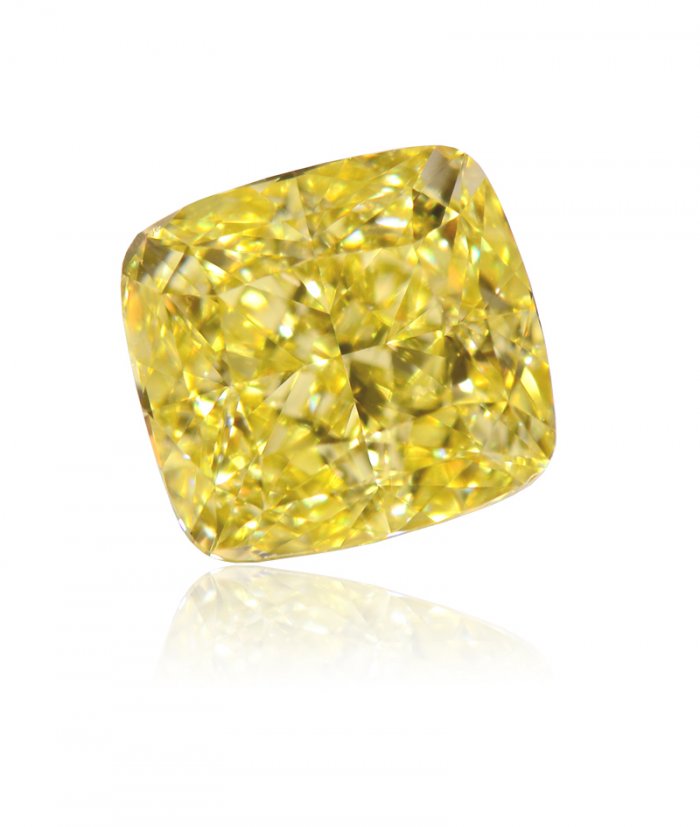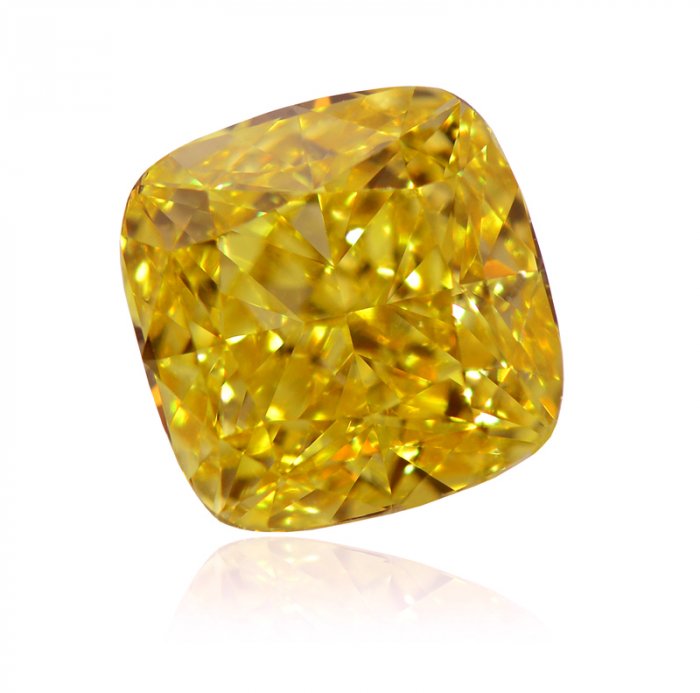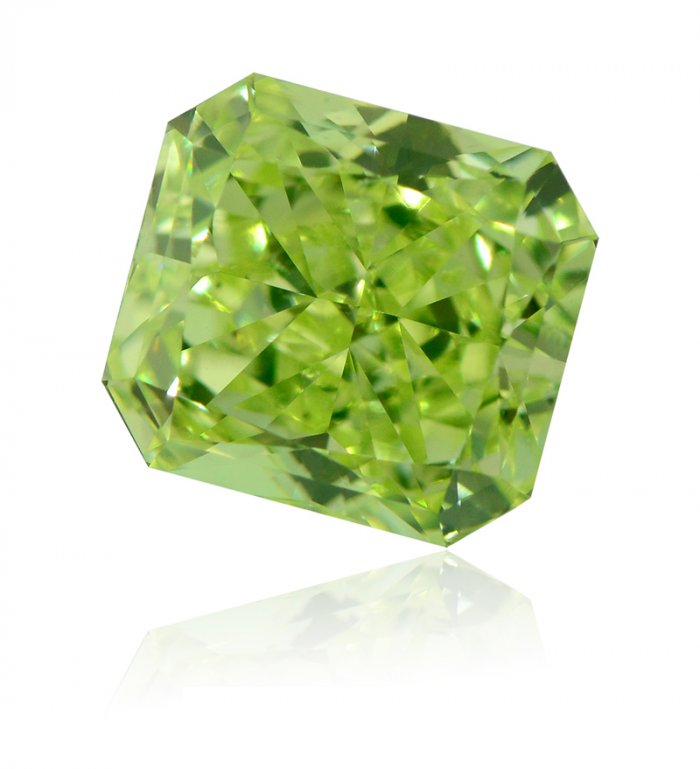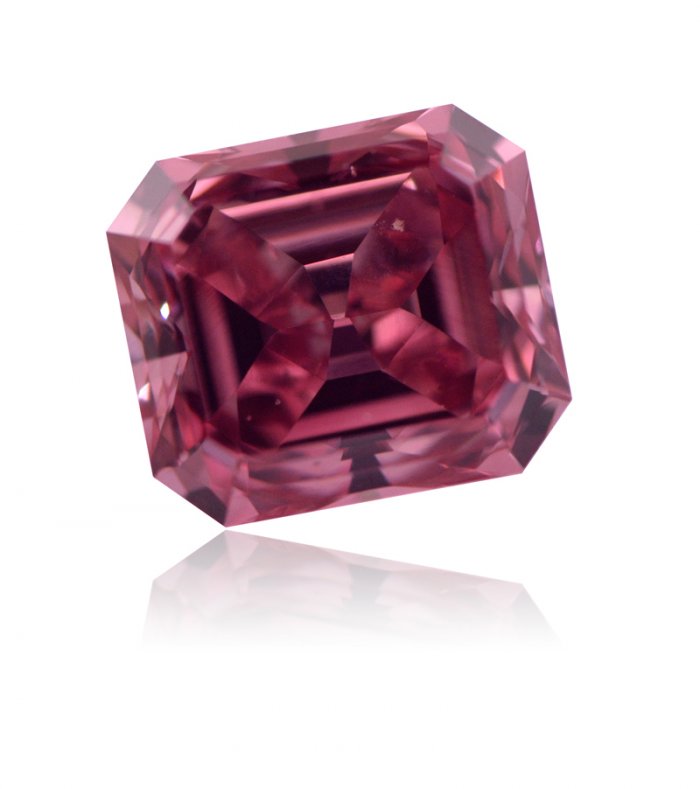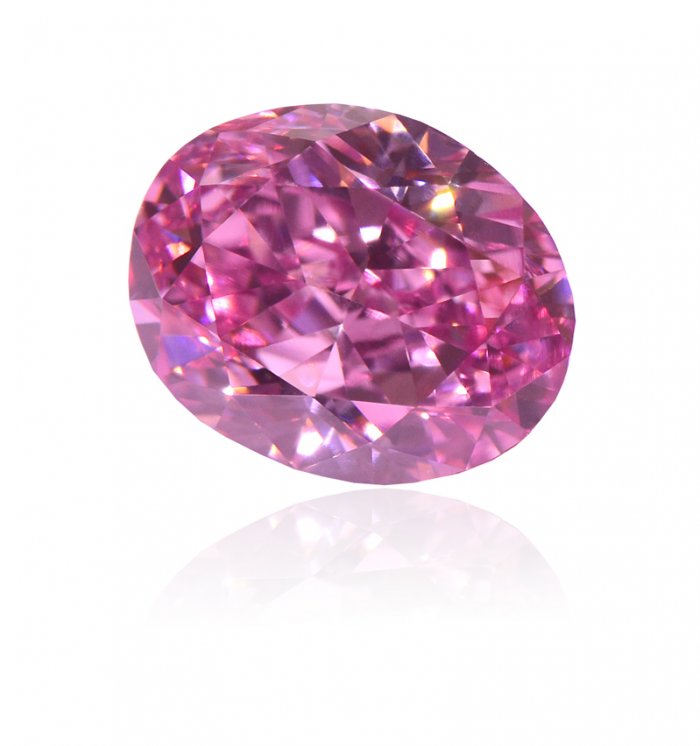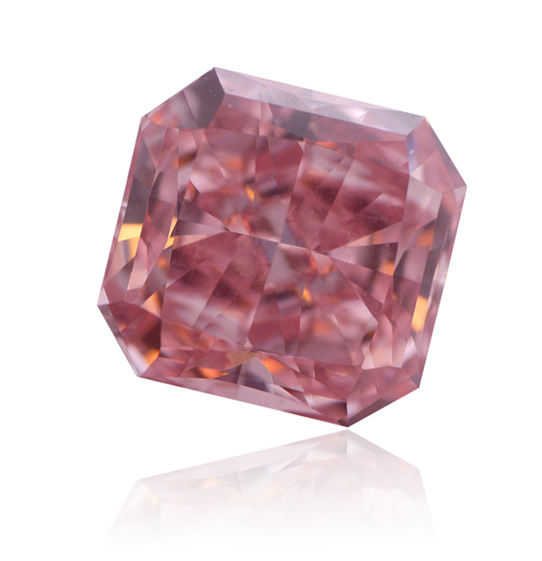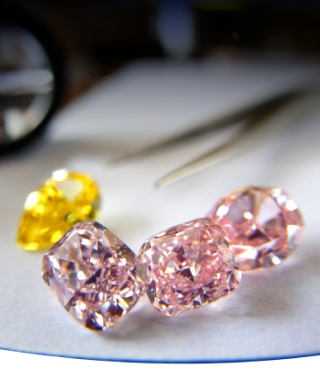COLOR MODIFIERS VERSUS UNDERTONE
In the world of fancy color diamonds, we apply a large number of terms to describe a stone. Some of these terms portray the stone’s general beauty, some its gemological attributes, and some its color. Many terms were invented by the GIA and became industry standards after decades of use. Other terms, such as “Tint, Tone, Shade, Pure, Dirty, Sweet, a touch of…”, etc., were gradually added by the trade in response to the real need to describe elements absent from the GIA report. Since these terms were invented spontaneously by individuals in the trade, a buyer can hear many different terms, all of which describe the exact same color deviations. Most diamond dealers understand the unofficial terminology but a jeweler may find it challenging, especially if he needs to make an intelligent sales pitch to a savvy customer.
GIA terminology describes different colors, called modifiers, when they appear in a significant amount but is silent about nuances within any specific color category. These “nuances” are not always insignificant, and can have a tremendous impact on price. Let’s discuss the two terms: modifier and undertone.
MODIFIER
Modifier refers to the presence of a second or third color in the stone’s color mix. Modifiers are noted on the GIA report, depending on the extent of their presence. Here are some examples for different modifiers. Please keep in mind the order in which the terms appear: The last word in the description indicates the body color and the prior terms its modifiers (the percentages noted below each color are only indicative and represent the amount of modifier in the general color mix).
Once the GIA report mentions the color and its modifiers, we acknowledge our boundaries. And yet, we still need to carefully analyze the diamond’s undertone to determine the quality of the stone’s color and its potential impact on price.
UNDERTONE
The “undertone” is a visible but subdued shade, beneath the main color of a fancy color diamond, whether that color is comprised of a single color or a mixture of modified colors. As opposed to the color modifier, the undertone is not mentioned anywhere on the GIA report because it exists within the boundaries of each color category; in fact, all colors have a wide range of chroma and therefore vary in their appearance.
The undertone can have a positive or negative effect on the beauty of the diamond and thus on price of course.
For example: three stones, all graded as fancy vivid yellow. One has a strong warm undertone (some will refer to as “a brown touch”); this will warrant a discount. The second will appear as very close to a primary yellow (the pure form of yellow), with no undertone; it will thus receive a high premium. The third has an orange undertone but will also receive a premium. Although they all have the same GIA color description, their face-up appearance is very different, making the price differences between them rather vast.
The same categorization applies for Pink, Blue, Green, orange, and even stones with modified colors.
A Pink color will range from a warm Pink (with an Orange undertone) and some will be on the “cold” side, with a Purple undertone; Still, both may have the same GIA definition.
A Blue fancy color diamond will range from a primary Blue, with no undertone, to a Blue with a Gray undertone. And yes, they remain under the same GIA color definition.
Like most fancy color diamonds, single-color diamonds are not the only stones affected by undertone. Some color combinations can have the exact same color description on the GIA report and look completely different in reality. Consider the following example:
On the left, a fancy intense Yellow Green with a unique phosphorescent element (an attribute not mentioned in the report), and on the right, a fancy intense Yellow Green with no undertone.
Another example: These three diamonds are graded as fancy vivid Pink. The one on the left has a distinct undertone, typically seen in Pink stones originating from Australia). The stone in the center, due to a ”cold” undertone, has a different look all together (it is more common to find such an undertone in stones from South Africa). For these two stones, the undertone will grant a premium. On the right, a Pink with an Orange undertone, will suffer from a significant discount.
To conclude, most of us have similar expectations when we ask to see a fancy color diamond. These expectations are probably based on memories from our first encounter with primary colors as seen on candies, clothes, toys and so on. This is probably why we use terms such as: Sweet Pink, Baby Pink, Sky Blue, Lemon Yellow, etc. The undertones and modifiers, which we may not expect to see in a diamond, either carry us closer to or further from these color memories. They thus have a great impact on demand and, subsequently, on price.


